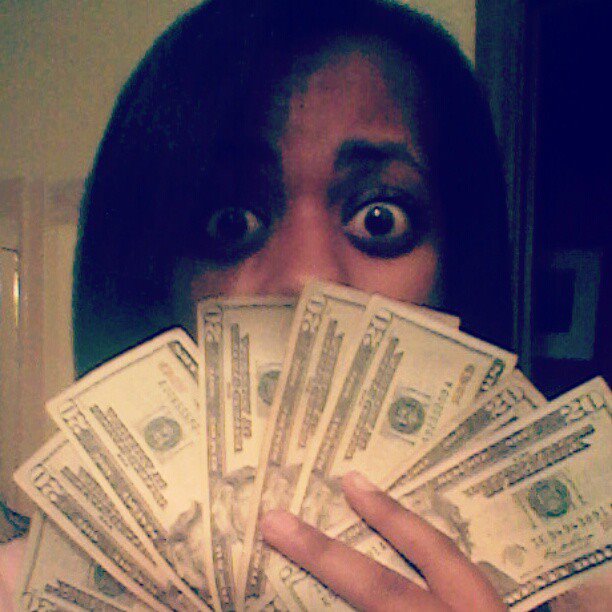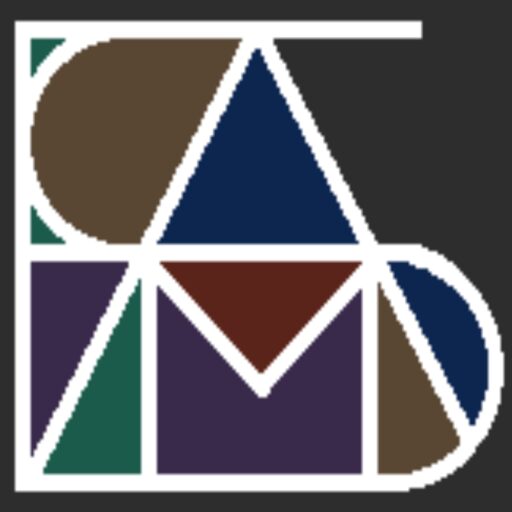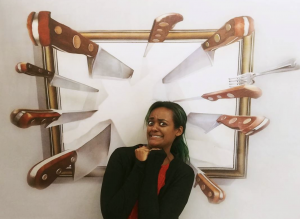
Talking about finances is still somewhat taboo for normal folk, and I really need it to not be. Dealing with and optimizing money is hard to learn on your own, and at this point there is never a shortage of people telling you what to do with your money. So, I’m not gonna really focus on that, but more keeping track of where your money is and goes. First up….
BUDGETING
Tracking spending is probably the hardest part about cash flow. Sometimes it seems like even breathing costs money (which if you’re doing it in your own place, it kind of does.) But it’s the most important part.
Coming up with your ideal yet realistic budget is a great place to start. How much do you think you spend, and how much do you want to spend every month in categories like rent, food, subscriptions, activities, etc.? This sets the groundwork for a future budget plan. The next step is to understand how you’re actually spending your money. To better understand your spending, I highly recommend Mint. After connecting your spending accounts and checking the categories of your transactions, it provides convenient breakdowns of your spending by month. Alternatively, you could investigate all of your transactions manually via statements, but that’s time-consuming.
After analyzing your actual spending, compare it to your theoretical budget. In areas where there’s less spending, consider lowering the budget. In areas where there’s more spending, analyze the patterns and see what is pushing you over. From there, you can either adjust the budget, or cut out certain activities to meet your budget.
For those familiar with the envelope method or zero-sum budgeting and want to replicate it online, many of these features and more can be replicated with the budgeting app DAS Budget, which works with any bank that utilizes Plaid. In addition to ear-marking expenses within your checking account, DAS can also create and allocate money to goals over an extended period of time.
CHECKING ACCOUNT(s)
Picking somewhere to store your money is a huge decision, because it’s not just about storing money. It’s about accessibility as well. There are plenty of banks out there, but my two favorite are easily Schwab and One Finance. Schwab is awesome for their unlimited reimbursement of ATM fees*, lack of foreign transaction fees*, net worth feature, and other investment options in-house. One Finance is awesome for their high savings APR rate and virtual sub accounts, combined with a very sleek UI. If you sign up with One Finance using my referral link, we’ll both get $50. I also have a Capital One checking account so that I can have access to a brick and mortar bank if needed—and I got a $400 bonus for opening one during a promotion cycle.
Regardless of what you go with, if your bank doesn’t have an auto-budgeting feature and you don’t want to download DAS, I highly recommend keeping at least one month of projected expenses as the minimum amount in your checking account. This prevents the possibility of overdraft fees and any potential temporary gaps in paychecks.
SAVINGS ACCOUNT
In such unprecedented times, it’s important to have savings built up. I know the recommended amount is 3-6 months, but I prefer 6-8 months, especially in light of the pandemic. If I had dependents, I might even up that amount to a year. I have since transferred to One Finance, which has a 1% default savings rate and a 3% rate for amounts auto-saved from direct deposits and debit card round-up transactions. Another plug for my One Finance referral link, so we can both get $50.
ASSETS/LIABILITIES
Listing out my debts was terrifying, but I’ve made my peace with it and I’ve managed to put quite the dent in it as well this year! I also have tabs on my spreadsheet where I can plug in my interest rate and payments to calculate the payoff date based on what I pay every month. This allows me not only to gain an idea of how long I’ll be paying, but also allows me to project my net worth.
My assets are cash, stock/ETFs, and crypto. Listing assets is also essential for a full picture of net worth. Unfortunately, as I can only loosely predict appreciation of assets, my projected net worth is somewhat variable. Now while I have investments, I always make sure that my emergency fund is in a separate, accessible account in case of unexpected expenses.
NET WORTH
First of all, net worth is NOT equivalent to personal worth. As I’ve only had a positive net worth for the first three months of adulthood (thank you student loans), this is something I’ve had to take care to remember. But net worth is extremely important as an indicator of financial health.
Now, I keep track of my net worth in my spreadsheet mostly to be able to make predictions, but I also utilize Personal Capital to visualize my net worth and provide a listed breakdown of all of my assets and liabilities. While the app has some troubles auto refreshing from certain accounts, the aggregation is extremely useful, especially as I’ve managed to completely forget about the existence of certain accounts periodically.
BONUS: INVESTING
I honestly hate investing, and acknowledge it as a form of legalized gambling. That being said, I do maintain a portfolio because my goal is to build wealth and financial security. Schwab also houses my Roth IRA which I max out every year to minimize future tax liability. My investments can be divided into the following categories (in order of largest to smallest): mutual funds, stablecoins, crypto, and stocks.
As far as mutual funds, I primarily used Schwab’s expert fund list in order to pick the funds that I liked the most and that allowed for a lot of diversification of funds. I made sure to include socially responsible and international funds as well, because I try to be both ethical and a citizen of the world whenever possible. The other funds I’m invested in are a variety of Schwab target retirement funds, which I’m split upon in order to diversify my risk.
Volatility scares the crap out of me, so I am invested in none of the standard cryptocurrency like Bitcoin. Still, I technically have cryptocurrency in the form of stablecoins, which I have in order to obtain Celsius Network’s interest rate of a whopping 10.51%! This interest is paid out weekly, and it’s one of my favorite discoveries to date. While there is a bit of risk involved with holding your money anywhere, the founders are wildly respected and brilliant, so I am comfortable holding investment** money there.
If you join Celsius Network using my referral code 131957fec4 or this link when signing up, you’ll earn $40 in BTC with your first transfer of $400 or more! You can also store other forms of cryptocurrency on Celsius and earn interest on those as well. So not only will your investment (hopefully) rise with the value of the coin, but also add value via compounded interest—truly the best of both worlds.
Stocks are simple. I’m only invested in Apple because it was cheap and is a blue chip stock. Honestly, I find it’s both easier and cheaper to invest in funds related to the industries I want to invest in, be it technology, hospitality, or retail. There are plenty of resources on choosing decent stocks, but ultimately, it’s a huge gamble. Every stock is one scandal away from a plummet (although if we’re being honest, the world will probably end before Amazon shuts down.)
So as of December 2020 April 2021, that’s the multi-faceted system of how I manage my finances. It’s honestly a lot easier than it sounds, mostly because this is a system that I’ve built upon through the years.
* This is SUPER rare in checking accounts
** Don’t invest any money you can’t afford to lose! My emergency fund is wholly liquid and in a separate account.
2021-04-16 This post was updated to reflect my switch from Simple Bank to One Finance due to Simple being shut down.


